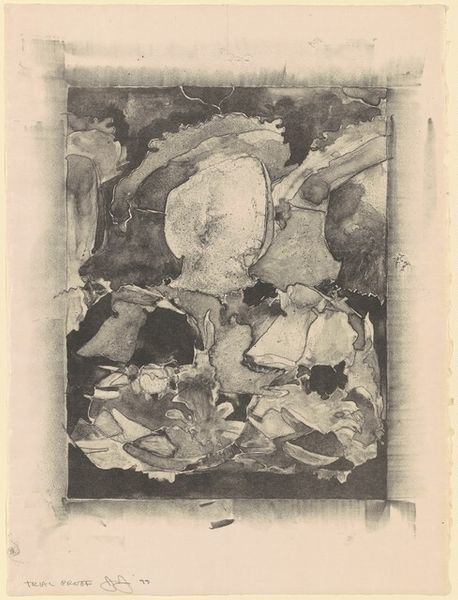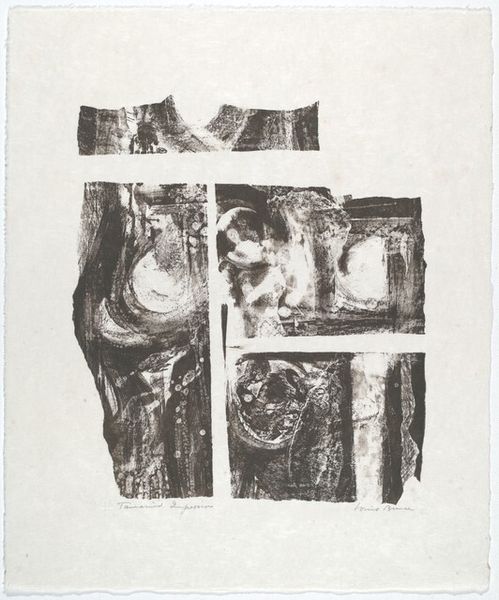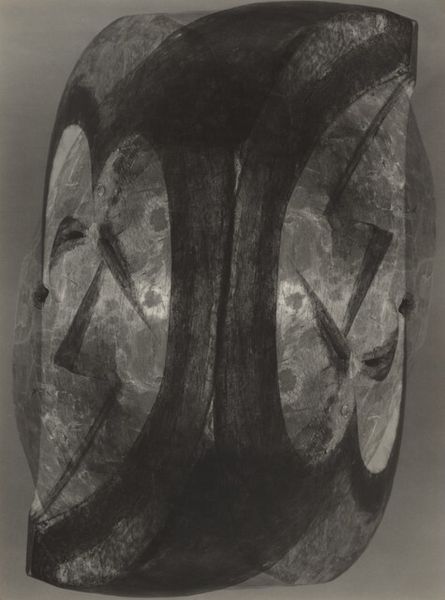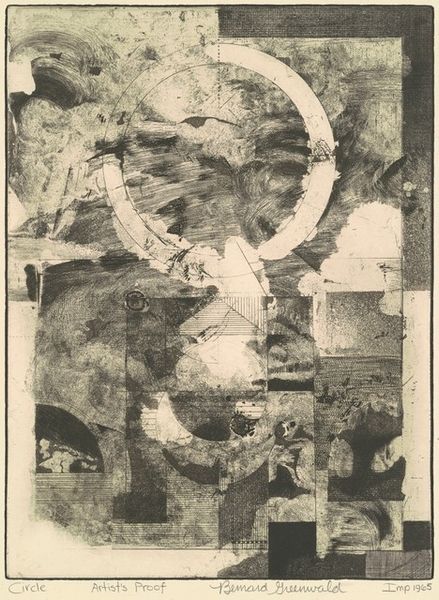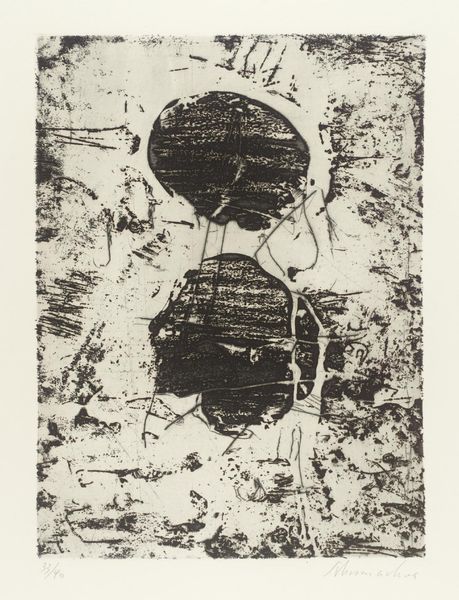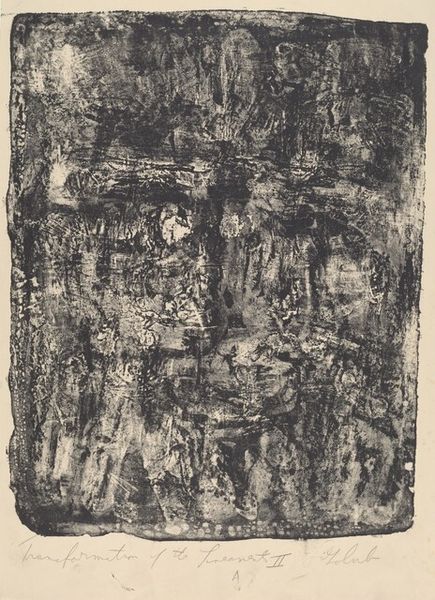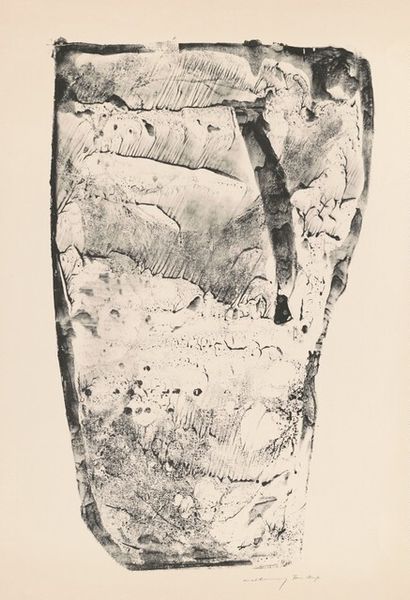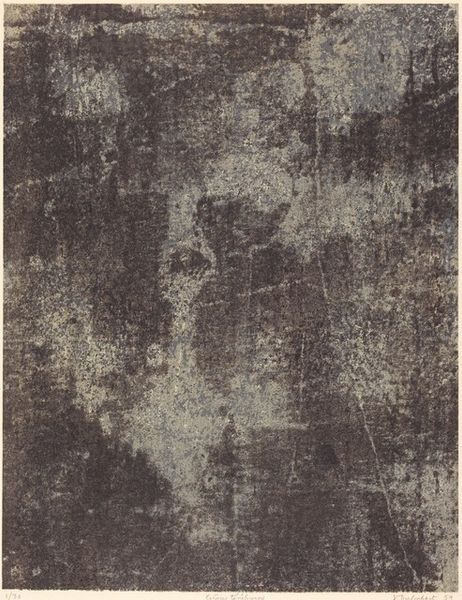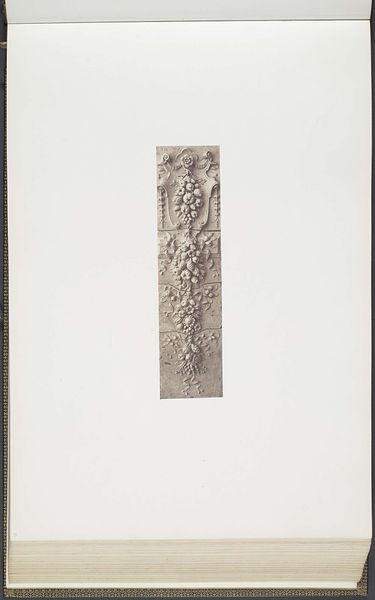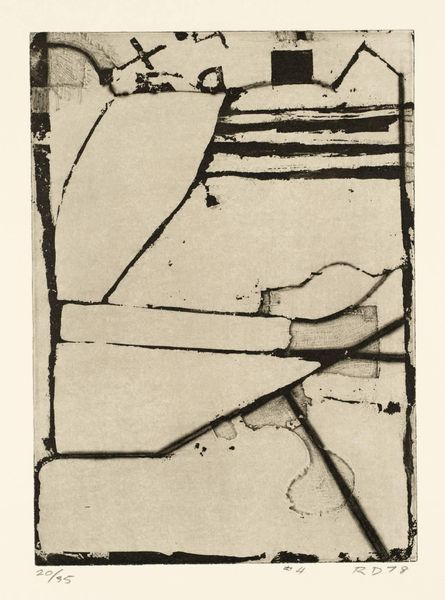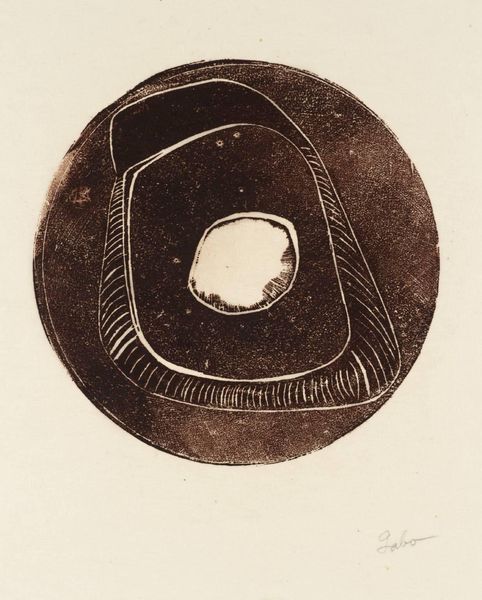
mixed-media, collage, print, charcoal
#
abstract-expressionism
#
mixed-media
#
collage
# print
#
charcoal drawing
#
charcoal
Dimensions: image: 42.5 x 25.3 cm (16 3/4 x 9 15/16 in.) sheet: 46.9 x 30 cm (18 7/16 x 11 13/16 in.)
Copyright: National Gallery of Art: CC0 1.0
Pavel Nesleha made this intriguing print, Gral c. 4, sometime in the 20th century, using etching and aquatint. It’s a complex image, mostly grey-black, built up with textures and lines. You can sense the artist really wrestling with the plate, digging into it, layering and scraping. I love seeing the history of the making right there on the surface. The print shows a kind of vessel, or maybe a torn opening. There’s this round, eye-like form in the middle, almost like a portal. The textures are fantastic – rough, granular, with these delicate drips like tears or ghostly figures. The central void is hypnotic, pulling you in. It feels broken and worn, but somehow sacred, like an ancient artifact. Nesleha reminds me of Antoni Tàpies, both artists unafraid of rough surfaces and ambiguous forms. This piece is about process, about excavation, about the possibility of finding something profound in the broken and discarded. It's less about answers, and more about the questions themselves.
Comments
No comments
Be the first to comment and join the conversation on the ultimate creative platform.
